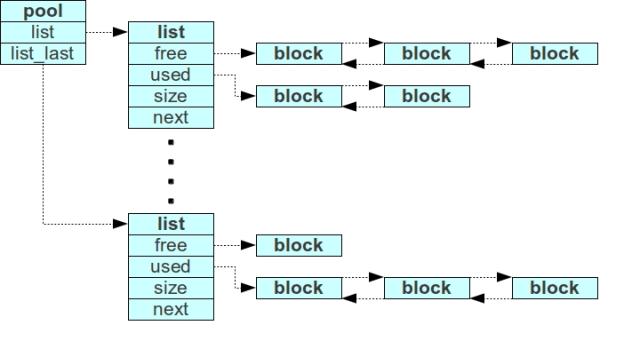cd /ect/X11/xorg.conf
vi xorg.conf
找到Section"Monitor"
`````````````
```````````
```````````
DPMC(似乎是这个单词,总之是最后一行) “ture”
EndSection
Section"Screen"
····················
将上面的"ture” 改为 "false"
保存退出即可。
--------------------------------------------------
You need to edit your /etc/X11/xorg.conf
configuration file.
In that screen resolution you have to set it properly,
just try to set the screen resolution to 800x600 and see.
After editing the conf file also still you are getting
the same error please post the VMware log & Guest mechines X log.。
X11重要目录
与X11R7有关的软件,大多放在/usr及其子目录中。以下是较为重要的目录的说明:
![]() /usr/bin:存放X Server和不同的X Clients。
/usr/bin:存放X Server和不同的X Clients。
![]() /usr/include:开发X Client和图形所需的文件路径。
/usr/include:开发X Client和图形所需的文件路径。
![]() /usr/lib:X Server和X Clients所需的函数库目录。
/usr/lib:X Server和X Clients所需的函数库目录。
![]() /usr/lib/X11:保存多项资源,如字体和文件等。
/usr/lib/X11:保存多项资源,如字体和文件等。
![]() /usr/lib/xorg/modules:包含驱动程序与多种X Server模块。
/usr/lib/xorg/modules:包含驱动程序与多种X Server模块。
![]() /usr/X11/man:保存X11程序编写时的手册说明页。
/usr/X11/man:保存X11程序编写时的手册说明页。
/etc/X11/xorg.conf文件
在安装时如果没有设置X Window系统,之后必须先行设置鼠标、键盘、显示器以及显示卡等,这样才能成功启用X Window系统,而这些设置都记录在/etc/X11/xorg.conf文件中。这个文件的重要性可见一斑。
这个文件由数个Section/EndSection的区块组成,而每个区块的格式如下:
Section "Section名称"
选项名称 "选项值"
选项名称 "选项值"
选项名称 "选项值"
…
EndSection
下面将说明/etc/X11/xorg.conf文件中使用的Section类型及每个类型可用的选项名称和选项值。
ServerLayout
“ServerLayout”Section主要用于建立X Server启动时的外观,如果文件中包含多个ServerLayout Section,则默认会使用第一个ServerLayout Section的设置。
以下是此区块的系统默认值,以及可供使用的选项说明:
Section "ServerLayout"
Identifier "Default Layout"
Screen "Default Screen"
InputDevice "Generic Keyboard"
InputDevice "Configured Mouse"
InputDevice "stylus" "SendCoreEvents"
InputDevice "cursor" "SendCoreEvents"
InputDevice "eraser" "SendCoreEvents"
EndSection
![]() Identifier:此ServerLayout Section的惟一名称。
Identifier:此ServerLayout Section的惟一名称。
![]() Screen:“Screen”Section指定的名称,此名称左侧的数字表示在Multi-head环境下的屏幕数量,如果使用标准的Single-head显示卡,则此值为0。在此名称右侧的数字分别代表屏幕左上角的X与Y绝对坐标,默认值为“0 0”。
Screen:“Screen”Section指定的名称,此名称左侧的数字表示在Multi-head环境下的屏幕数量,如果使用标准的Single-head显示卡,则此值为0。在此名称右侧的数字分别代表屏幕左上角的X与Y绝对坐标,默认值为“0 0”。
![]() InputDevice:在X Server中的“InputDevice”Section名称。通常在此仅有两行设置,即Mouse0和Keyboard0,也就是系统中的第一个鼠标和键盘,而其他的设备大多可以忽略。
InputDevice:在X Server中的“InputDevice”Section名称。通常在此仅有两行设置,即Mouse0和Keyboard0,也就是系统中的第一个鼠标和键盘,而其他的设备大多可以忽略。
Files
“Files”Section用于设置X Server服务的路径,如字体和颜色。以下是此区块的系统默认值,以及可供使用的选项说明:
Section "Files"
FontPath "/usr/share/X11/fonts/misc"
FontPath "/usr/share/X11/fonts/cyrillic"
FontPath "/usr/share/X11/fonts/100dpi/:unscaled"
FontPath "/usr/share/X11/fonts/75dpi/:unscaled"
FontPath "/usr/share/X11/fonts/Type1"
FontPath "/usr/share/X11/fonts/100dpi"
FontPath "/usr/share/X11/fonts/75dpi"
FontPath "/usr/share/fonts/X11/misc"
# path to defoma fonts
FontPath "/var/lib/defoma/x-ttcidfont-conf.d/dirs/TrueType"
EndSection
![]() RgbPath:RGB数据库的路径。这个文件定义在X中所有有效颜色的名称,并且指定数值。
RgbPath:RGB数据库的路径。这个文件定义在X中所有有效颜色的名称,并且指定数值。
![]() FontPath:设置X Server寻找字体时的路径。可以同时使用多个路径,但需用逗号隔开。
FontPath:设置X Server寻找字体时的路径。可以同时使用多个路径,但需用逗号隔开。
Module
“Module”Section主要用来告诉X Server应加载哪些模块。这些模块可以提供额外的服务功能,一般并不需要更改此处的值。此处使用的惟一选项为“Load”,它可用来加载模块。以下是此区块的系统默认值:
Section "Module"
Load "i2c"
Load "bitmap"
Load "ddc"
Load "dri"
Load "extmod"
Load "freetype"
Load "glx"
Load "int10"
Load "type1"
Load "vbe"
EndSection
InputDevice
“InputDevice”Section用于设置鼠标或键盘等输入设备,以便通过X Server提供信息给Linux系统,多数系统至少都存在两个InputDevice Section(鼠标和键盘)。
以下是此区块的系统默认值,以及可供使用的选项说明:
Section "InputDevice"
Identifier "Generic Keyboard"
Driver "kbd"
Option "CoreKeyboard"
Option "XkbRules" "xorg"
Option "XkbModel" "pc105"
Option "XkbLayout" "us"
Option "XkbOptions" "lv3:ralt_switch"
EndSection
Section "InputDevice"
Identifier "Configured Mouse"
Driver "mouse"
Option "CorePointer"
Option "Device" "/dev/input/mice"
Option "Protocol" "ExplorerPS/2"
Option "ZAxisMapping" "4 5"
Option "Emulate3Buttons" "true"
EndSection
Section "InputDevice"
Driver "wacom"
Identifier "stylus"
Option "Device" "/dev/wacom" # Change to
# /dev/input/event
# for USB
Option "Type" "stylus"
Option "ForceDevice" "ISDV4" # Tablet PC ONLY
EndSection
Section "InputDevice"
Driver "wacom"
Identifier "eraser"
Option "Device" "/dev/wacom" # Change to
# /dev/input/event
# for USB
Option "Type" "eraser"
Option "ForceDevice" "ISDV4" # Tablet PC ONLY
EndSection
Section "InputDevice"
Driver "wacom"
Identifier "cursor"
Option "Device" "/dev/wacom" # Change to
# /dev/input/event
# for USB
Option "Type" "cursor"
Option "ForceDevice" "ISDV4" # Tablet PC ONLY
EndSection
![]() Identifier:设置设备的名称。通常这些名称后面都会加上一个数字,第一个设备的数字为0。例如,第一个键盘的Identifier为Keyboard0。
Identifier:设置设备的名称。通常这些名称后面都会加上一个数字,第一个设备的数字为0。例如,第一个键盘的Identifier为Keyboard0。
![]() Driver:告诉X Server应该从哪里加载驱动程序。
Driver:告诉X Server应该从哪里加载驱动程序。
在大多数的InputDevice Section中,尚有为数不等以“Option”为首的选项,并且包含特定的选项值。如果要启用这些选项功能,只要将每行开头的注释符号“#”去除即可。
Monitor
“Monitor”Section用于设置系统使用的显示器类型,设置此处选项时应特别留意,因为不适当的设置可能会给显示器造成损害。
以下是此区块的系统默认值,以及可供使用的选项说明:
Section "Monitor"
Identifier "Generic Monitor"
Option "DPMS"
HorizSync 28-51
VertRefresh 43-60
EndSection
![]() Identifier:显示器的惟一名称。在这些名称后面都会加上一个数字,而第一个显示器的代表数字为0(Monitor0)。
Identifier:显示器的惟一名称。在这些名称后面都会加上一个数字,而第一个显示器的代表数字为0(Monitor0)。
![]() VendorName:显示器制造商名称。
VendorName:显示器制造商名称。
![]() ModelName:显示器类型名称。
ModelName:显示器类型名称。
![]() HorizSync:与显示器兼容的水平刷新频率范围,其单位为kHz。这个设置值会同时指出是否在此显示器中使用特定的Modeline值。
HorizSync:与显示器兼容的水平刷新频率范围,其单位为kHz。这个设置值会同时指出是否在此显示器中使用特定的Modeline值。
![]() VertRefresh:与显示器兼容的垂直刷新频率范围,其单位为kHz。这个设置值会同时指出是否在此显示器中使用特定的Modeline值。
VertRefresh:与显示器兼容的垂直刷新频率范围,其单位为kHz。这个设置值会同时指出是否在此显示器中使用特定的Modeline值。
Device
“Device”Section用于设置显示卡的信息内容,在此文件中至少需要包含一个以上的Device Section。如果系统中包含多张显示卡,或一张显示卡上有多种设置值,则可以使用多个Device Section设置。
以下是此区块的系统默认值,以及可供使用的选项说明:
Section "Device"
Identifier "VMWare Inc [VMware SVGA II] PCI Display Adapter"
Driver "vmware"
BusID "PCI:0:15:0"
EndSection
![]() Identifier:显示卡的惟一名称。
Identifier:显示卡的惟一名称。
![]() Driver:用来告诉X Server应从何处加载显示卡的驱动程序。
Driver:用来告诉X Server应从何处加载显示卡的驱动程序。
![]() VendorName:显示卡制造商名称。
VendorName:显示卡制造商名称。
![]() BoardName:显示卡类型名称。
BoardName:显示卡类型名称。
![]() BusID:显示卡的总线位置,这个选项适用于多显示卡环境。
BusID:显示卡的总线位置,这个选项适用于多显示卡环境。
Screen
“Screen”Section合并了Device和Monitor的部分,以便能够形成成对的设置内容。在此文件中至少需要包含一个以上的Screen Section。
以下是此区块的系统默认值,以及可供使用的选项说明:
Section "Screen"
Identifier "Default Screen"
Device "VMWare Inc [VMware SVGA II] PCI Display Adapter"
Monitor "Generic Monitor"
DefaultDepth 24
SubSection "Display"
Depth 1
Modes "1024×768" "800×600" "640×480"
EndSubSection
SubSection "Display"
Depth 4
Modes "1024×768" "800×600" "640×480"
EndSubSection
SubSection " Display"
Depth 8
Modes "1024×768" "800×600" "640×480"
EndSubSection
SubSection "Display"
Depth 15
Modes "1024×768" "800×600" "640×480"
EndSubSection
SubSection "Display"
Depth 16
Modes "1024×768" "800×600" "640×480"
EndSubSection
SubSection "Display"
Depth 24
Modes "1024×768" "800×600" "640×480"
EndSubSection
EndSection
![]() Identifier:定义一个“Screen”名称,以便在“ServerLayout”Section中进行参照。
Identifier:定义一个“Screen”名称,以便在“ServerLayout”Section中进行参照。
![]() Device:指定“Device”Section中的名称。
Device:指定“Device”Section中的名称。
![]() Monitor:指定“Monitor”Section中的名称。
Monitor:指定“Monitor”Section中的名称。
![]() DefaultDepth:默认的色深(Color Depth)位数。
DefaultDepth:默认的色深(Color Depth)位数。
DRI
Direct Rendering Infrastructure(DRI)是一种接口,它让3D软件可以使用新型显示设备的3D硬件加速功能。除此之外,DRI也能改善2D硬件加速的性能。但通常并不使用这个选项功能,除非在“Module”Section中打开DRI设置。以下是此区块的系统默认值:
Section "DRI"
Mode 0666
EndSection


